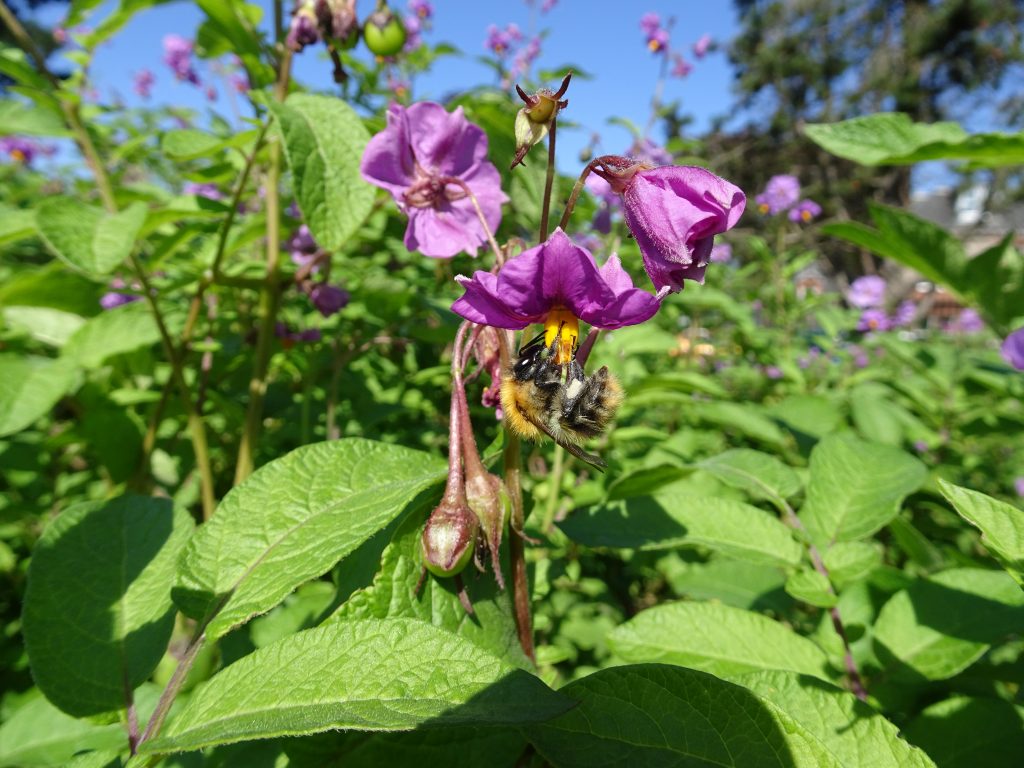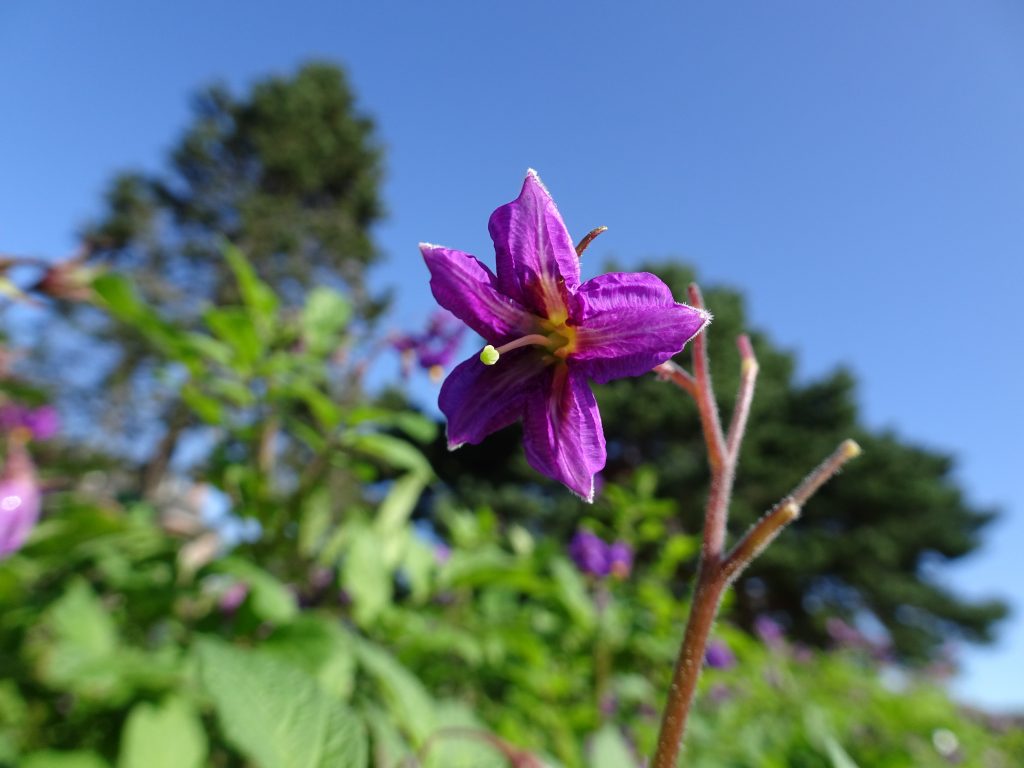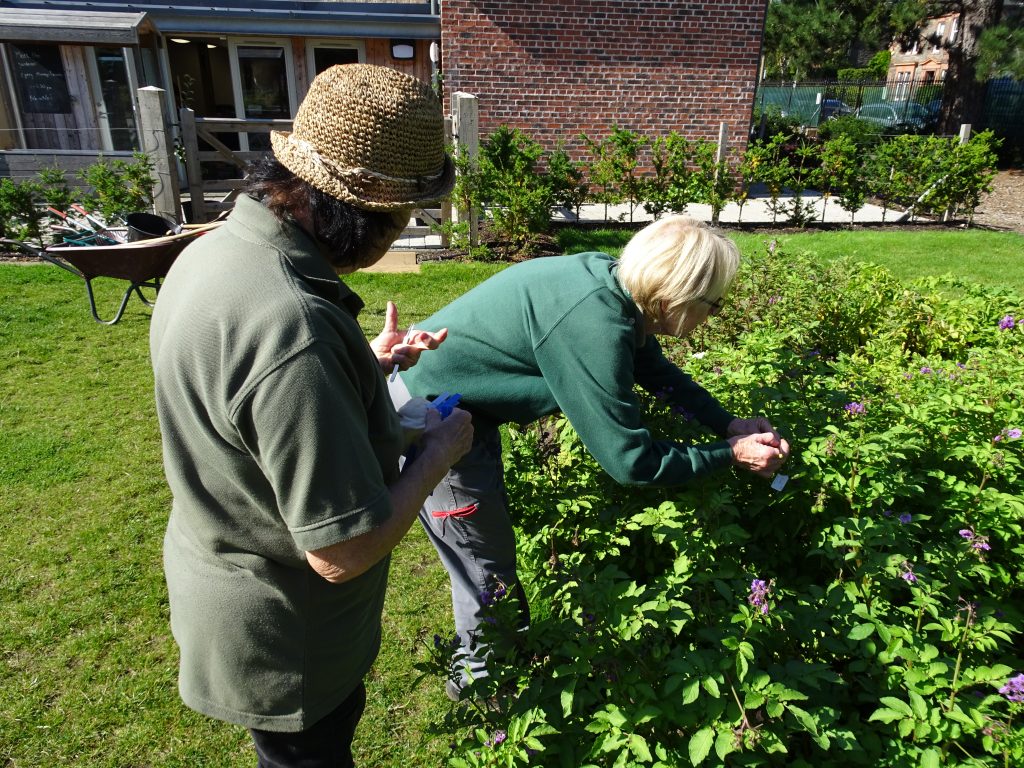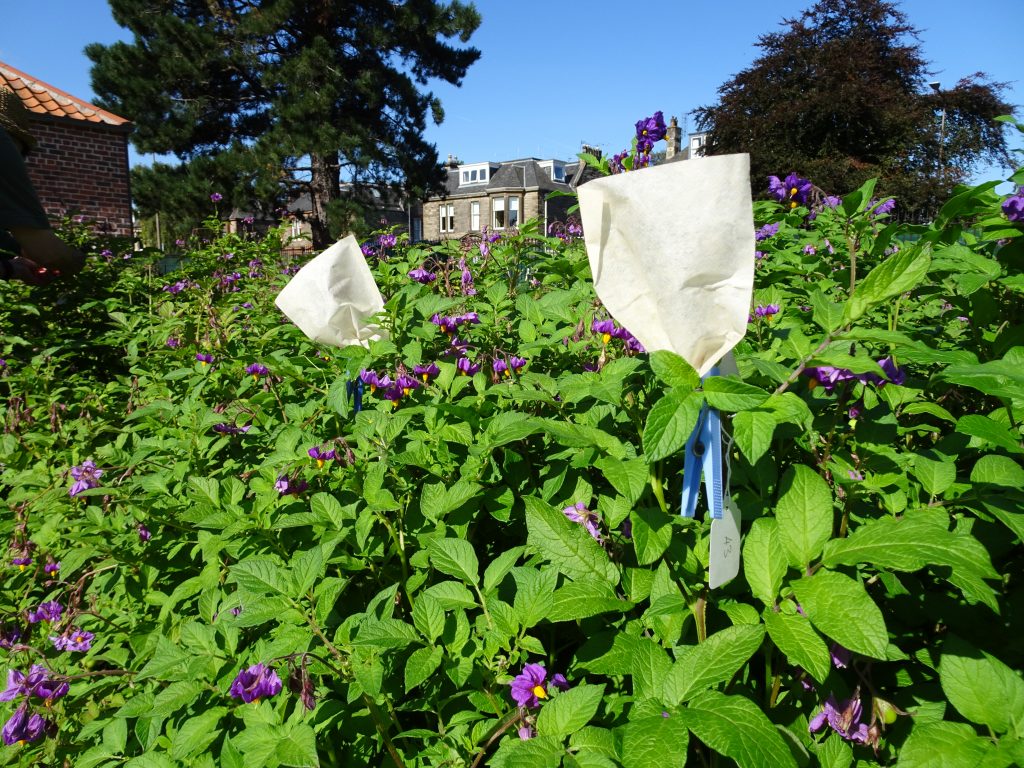Jan and Liz, Edible Gardening Project volunteers, have been continuing the quest to recreate the Edinburgh potato (Solanum xedinense). A challenge that they face is that potato flowers are extremely attractive to both bumblebees and other pollinators. This means that if you want to conduct controlled crosses you need to get in quick. The ideal time is just as the flower bud shows the first signs of opening. The anthers (pollen-bearing structures) are stripped away to avoid the risk of self-pollination. Next the pollen of the desired ‘father’ is dabbed onto the stigma (receptive surface of the female part of the flower) with a fine brush and the newly pollinated flower is bagged to keep out the enthusiastic insects.
Below a series of images show the process and the challenges:
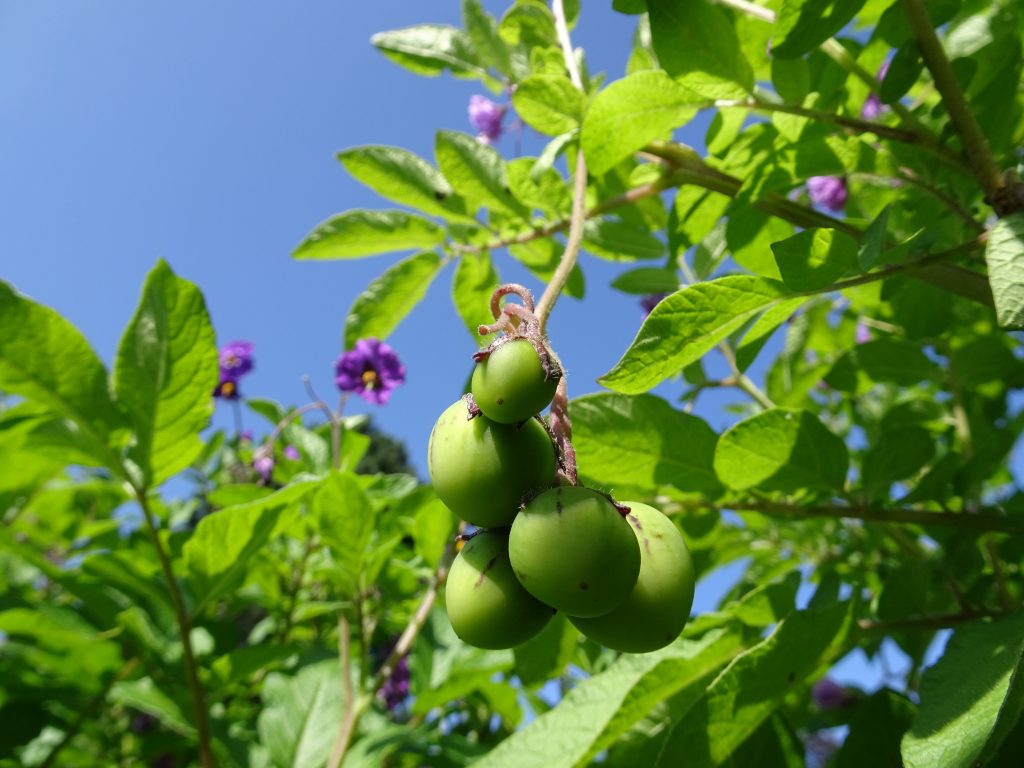
Due to all the insect activity potato fruits (berries) are very numerous in the potato patch. This is actually useful as it shows which varieties are fertile and potentially useful as parents in controlled crosses.
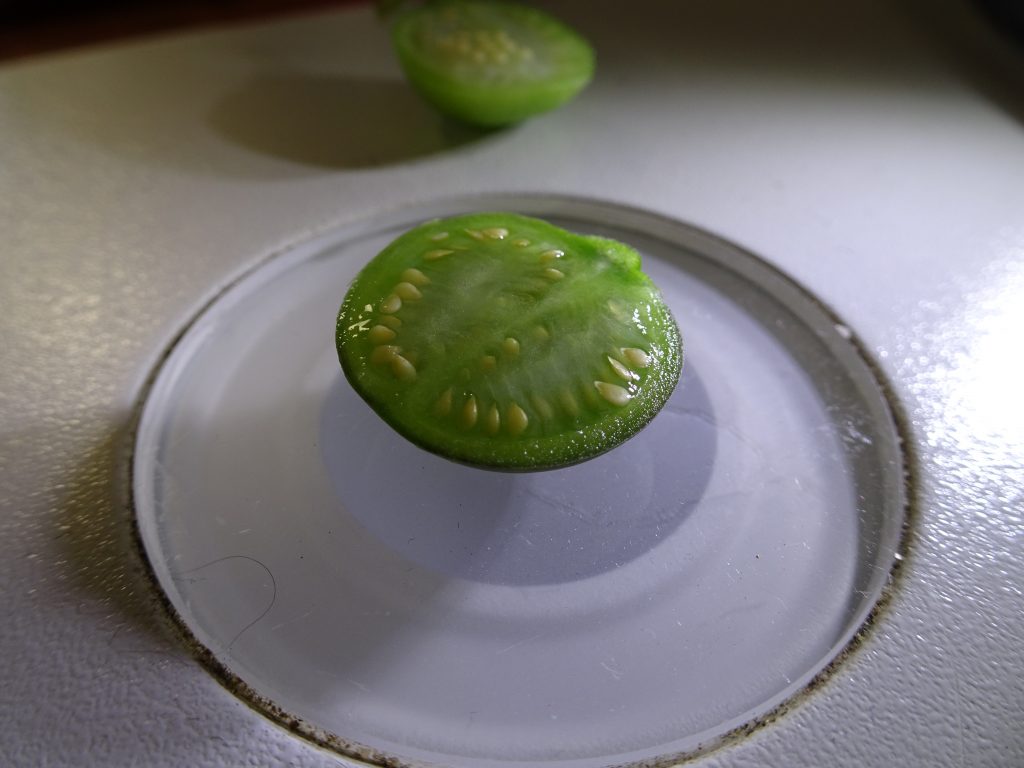
Potato plants produce fruits that look like small green tomatoes (to be expected as they are close relatives) that contain numerous small seeds.
Results of the controlled crosses so far indicate that using Solanum demissum as the mother results in a high percentage of success as indicated by normal fruit formation. However, using the domesticated potato as the mother has proved to be extremely hard and no successful pollination has resulted to date. This is explained by the different chromosome numbers present in the two parent species and is an observation from previous potato breeding work that has conducted the same inter-species cross.
The full details of the process of recreating the Edinburgh potato are published in Sibbaldia: The International Journal of Botanic Garden Horticulture issue 19 available to download here.

